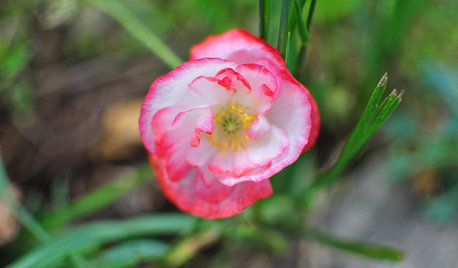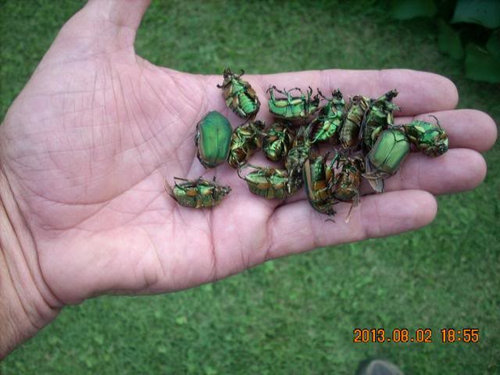June bugs??
slowpoke_gardener
10 years ago
Related Stories

REGIONAL GARDEN GUIDESGreat Lakes Gardener's June Checklist
Hear the berries beckoning? Pluck them while enjoying the wealth of garden blossoms and maybe kicking out a few bugs this month
Full Story0

GARDENING AND LANDSCAPINGPorch Life: Banish the Bugs
Don't let insects be the bane of your sweet tea and swing time. These screening and product ideas will help keep bugs at bay on the porch
Full Story
GARDENING AND LANDSCAPINGBreezy and Bug-Free Modern Porches
Screening keeps pests out of these diverse porches across the U.S., while thoughtful designs keep them visually appealing
Full Story
GARDENING GUIDESMid-Atlantic Gardener: What to Do in June
Abundant sun is yielding bountiful blooms in the garden this month, but don't forget to watch for pests, package some seeds and plan ahead
Full Story
GARDENING GUIDESSoutheast Gardener: What to Do in June
Get your snippers out to protect your roses from beetles and harvest lavender from the landscape. It's a glorious month for Southern gardens
Full Story
MONTHLY HOME CHECKLISTSTo-Dos: Your June Home Checklist
Get ready for summer by freshening up your entertaining spaces and preparing for good times with others
Full Story
GARDENING GUIDESTexas Gardener's June Checklist
Win the battle against heat and drought with these plant picks and extra effort, for a garden that reigns supreme in summer
Full Story
REGIONAL GARDEN GUIDESDelight in Summer’s Garden Glories — Here’s What to Do in June
Wherever you live in the United States, these guides can help you make the most of your summer garden
Full Story
GARDENING GUIDESTexas Gardener: What to Do in June
Don't be discouraged by the dry summer heat — hardy plants, container gardens and smart watering can help landscapes thrive
Full Story0

HOUZZ TOURSMy Houzz: Vintage Flair for a Lovingly Maintained Midcentury Gem
Antiques join luxe textiles and rich wallpapers to give a Dallas home by Ju-Nel sophistication and warmth
Full StoryMore Discussions







borderokie
borderokie
Related Professionals
Allentown Landscape Architects & Landscape Designers · Ballwin Landscape Architects & Landscape Designers · Lyons Landscape Architects & Landscape Designers · Prairie Ridge Landscape Architects & Landscape Designers · Roxbury Crossing Landscape Architects & Landscape Designers · Matthews Landscape Contractors · Surprise Landscape Contractors · Andover Landscape Contractors · Cockeysville Landscape Contractors · Holtsville Landscape Contractors · The Woodlands Landscape Contractors · Quartz Hill Landscape Contractors · Crystal Lake Decks, Patios & Outdoor Enclosures · Estero Decks, Patios & Outdoor Enclosures · Prichard Decks, Patios & Outdoor EnclosuresMacmex
MiaOKC
mulberryknob
slowpoke_gardenerOriginal Author
Okiedawn OK Zone 7
Erod1
mulberryknob
Okiedawn OK Zone 7
mulberryknob
Okiedawn OK Zone 7
Macmex
slowpoke_gardenerOriginal Author
mulberryknob
Okiedawn OK Zone 7
slowpoke_gardenerOriginal Author
Macmex
mulberryknob